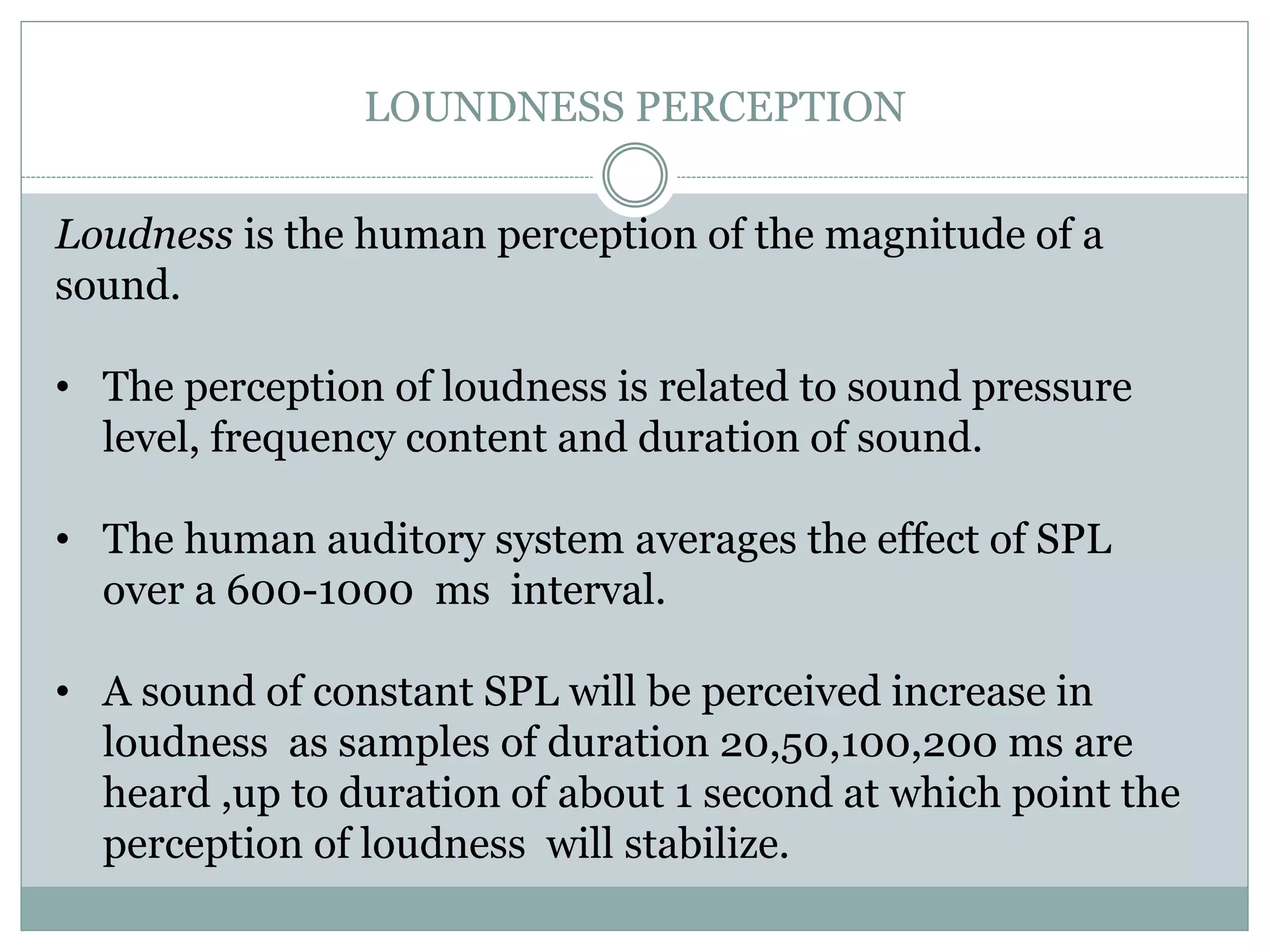The document discusses the human ear's anatomy and physiology, including its ability to perceive a wide range of sound frequencies and pressures, as well as the characteristics of sound, loudness perception, and measurement. It highlights key aspects of speech and music sound properties such as pitch, loudness, quality, and duration, and explains how these are measured, including A-weighting for sound level meters. Additionally, it covers the impact of sound intensity on perception and the significance of the decibel scale in understanding sound variations.




















![CHARACTERSTICS
SOUND IN SPEECH
• Typical outputs for normal
intensity speech can range
from 53 dB SPL for the [th] as
in 'think' to about 77 dB SPL
for the [a] in 'father'.
• Shouted speech can reach 83
dB SPL. This 24 dB range (+/-
12 dB) is related to the
characteristics of the human
vocal tract and vocal chords.](https://image.slidesharecdn.com/unit-3-181210154346/75/acoustics-on-human-ear-21-2048.jpg)
















